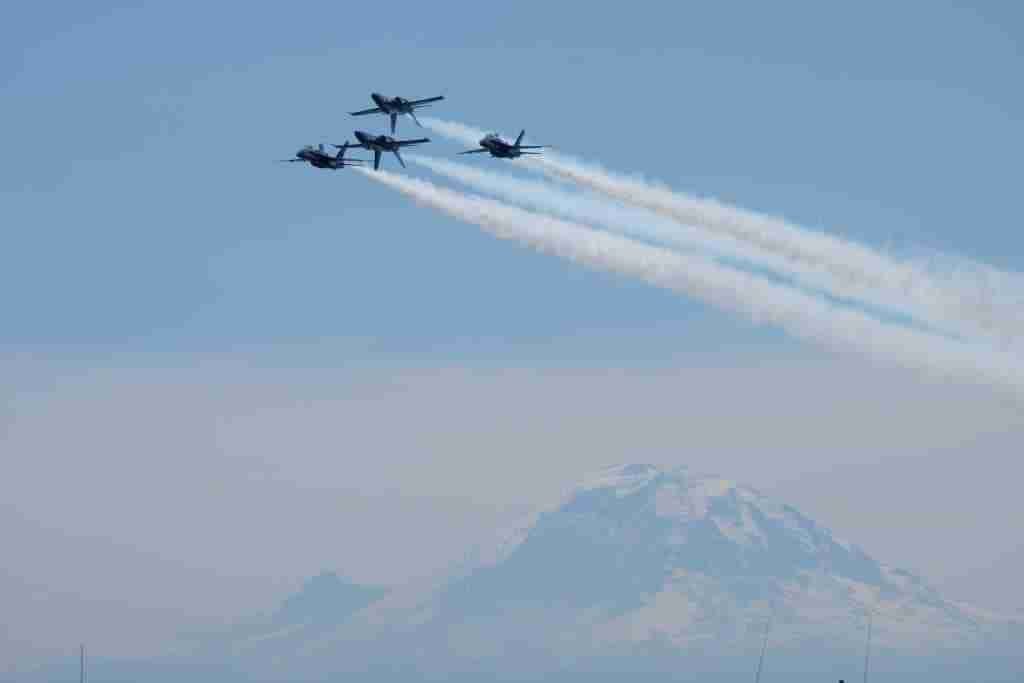‘Offense is the essence of air power – General H H Arnold’
Artificial Intelligence (AI) may be described as the ability of a cyber-physical system to perform activities possessing some form of human intelligence like in terms of pattern recognition, getting trained with practice, prediction or taking an independent decision etc.
AI has already become part of our daily lives with applications such as chatbots, Google searches, maps and direction etc. World over research is in progress in AI for military ISR (Intelligence, Surveillance, Reconnaissance), combat functions (in Air, Sea, Land and Sub-surface domains), predictive maintenance, cybersecurity, UAVs and many other fields. Already, the latest generation fighter jets like the F-35 are predominantly software-centric (up to 90%) for aircraft aerodynamics and manoeuvres to engage targets etc.
Indian Airforce (IAF) recently explored the feasibility of enhancing the fighter jet capabilities for combat functions through AI within the air-borne assets. In an e-symposium on “AI for Air Warriors” conducted recently, Chief of Air Staff Air Chief Marshal RKS Bhadauria aptly highlighted the significance of AI for IAF operations and further innovations required for making this a reality for IAF.
It was interestingly observed by the Air Chief that usually Air Forces have been early adopters of the latest technologies, but with AI, the success in the field of non-military applications has led the way this time. AI is set to bring large changes in the aerospace domain and the way air wars are fought. Further, in the field of aircraft maintenance, even though a large amount of digitization has already taken place in the IAF through electronic management systems, AI shall enhance the predictive maintenance procedures to keep the air fleet combat-ready.
Data Fusion with AI
A modern battle zone is a highly dynamic environment with multiple sensors collecting information at a rapid pace. Multi-platform Multi-sensor Data Fusion (MPMSDF) is undertaken to garner an accurate Situational Awareness. The target data received from heterogeneous sources is correlated and fused to enhance the detection capabilities and identify suspicious or threatening targets.
Indian Airforce (IAF) recently explored the feasibility of enhancing the fighter jet capabilities for combat functions through AI within the air-borne assets.
The creation of a Fusion Intelligence platform by using data available from Space-based sensors, Airborne units, Weather sensors, Surface sensors etc. is the first primary step. For any effective and efficient AI application, an AI-based Decision Support Systems (DSS) is required to depict the complex Air combat operation environment. Such activity can only be undertaken with the help of processors designed for Real-time operations.
It emerges that the AI finds application in combat functions throughout each step of the OODA (Observe, Orient, Decide, Act ) for an efficient Air Combat role. Modern aircrafts are being developed the world over with AI techniques to improve the aircraft abilities like speed and stealth with modern information age DSS within the fighter jets. AI greatly enhances the human pilot dynamics with the aircraft to make it more efficient and effective against adversaries while ensuring enhanced human safety.
AI in communication networks
In any DSS, assured availability of real-time information from multiple channels is a must in order to ensure the optimum working of the net-centric operations. The ‘sensor-to-shooter’ information flow requires high throughput and lowest latency in the network, else the information turns ‘stale’ for processing. An AI-based multi-access network, with Edge computing architecture, provides such an ideal communication solution. The existing communication channels, 5G and Satcom channels usage can be optimised for achieving flexible and assured bandwidth.
Autonomous UAVs with AI
In the near future, UAVs shall be collaborating with military aircraft in various missions and could be air-deployed for ISR support missions or for direct weapon attack on hostile targets. The UAVs would be associated with the military aircrafts in a ‘mother-daughter’ configuration and collaboratively controlled through AI component on each air asset.
Man-in-the -Loop for AI operations
The AI in military applications, specifically for combat, is still an evolving field and considered still far off from being a trustworthy partner for any key autonomous decision like a weapon launch. For example, the image processing algorithm for threat detection by an AI are still not fully developed to be precise yet. Therefore, the trust in the AI is presently low for permitting an autonomous engagement of any hostile target.

Thus, the man-in-the-loop emerges as a necessity for any AI application in combat activities. The modern military systems, like C4I systems, too are designed for AUTO/SEMI-AUTO/MANUAL (viz. Autonomous, Semi-autonomous, Manual) modes of operations with human interventions like push-trigger for FIRE (i.e. weapon shooting), threat detection or target selection. This actually makes the system to be called soft-real time, instead of the hard-real time system desired.
AI for predictive maintenance of IAF assets
AI use for predictive maintenance is an already mature technology in the commercial world and various vendors are already providing such services. The use of AI-based prediction maximizes the equipment efficiency and increases its availability for operations. Systems integrated with AI-based predictive maintenance software generates timely alerts and alarms to prompt action by the specialists. These modules shall assist in logistics management and avoid failure of equipment at any undesired point, making the operations risky.
Ethics of AI killing machines
A large amount of effort and investment is being made by militaries to create a totally autonomous AI trained machine. Such a system shall be designed to be self-learning and, hence, capable of training itself as per the opponent and the environment of operations. The aim of such an autonomous AI machine is to achieve the final goal of destroying the adversary finally. The paradox here is that AI developed by humans for combat operations requires to be actually imperfect for addressing the ethical aspects.

The future challenge here is that in case some human conscience is built into such systems through interlocks or safeguards, a smarted AI of the future shall learn on its own to overcome such protections. If such ethics questions are not addressed at an early stage of AI development, we may again have the situation faced by disillusioned scientists on successful deployment of Project Manhattan for concluding World War II.
Conclusion
It is a matter of time when AI-based combat algorithms are found onboard military aircrafts. The AI-enabled tactical fighter jets shall bring an altogether a new level of combat superiority through AI-driven technology and fly-by-wire controls. Typically, we may expect to find the cockpit displays becoming larger and pilots using HUDs (Head-up Displays)with more enriched tactical information, to increase the crew survivability and mission success. However, multiple challenges commencing with the requirement of an unbiased combat data-set to train and test AI systems exist.
The AI-related combat data confidentiality and cybersecurity is a priority to begin any combat AI project, and Smart AI Servers are to be established within India as part of the Defence infrastructure. Finally, the Defence Acquisition Procedures are not yet amenable for inducting AI systems, and maybe AI itself can help in revamping these Defence Acquisition procedures for the new role.


